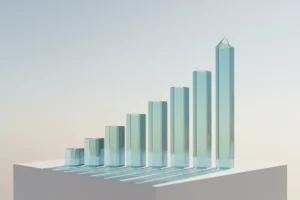After an initial purchase of 100M tokens, the Saros Foundation has formally launched a buyback program that will allocate up to 20% of protocol revenue to ongoing $SAROS repurchases. Built on Solana and powered by Dynamic Liquidity Market Making (DLMM), Saros says the move marks a shift toward sustainable tokenomics and long-term value alignment with its users.
Below, Saros CEO Lynn Nguyen answers questions on what’s driving the buybacks, how they’re funded, and what it signals for the next phase of Solana DeFi.
1. What influenced the Foundation to start the buyback program? Was there a specific event or reason behind the decision?
First, timing. Saros has reached a point where adoption and revenue are strong enough that we can support a buyback program without slowing down product development.
Second, consistency. Even before announcing the program, we had already repurchased over 100M $SAROS, roughly $38M at today’s value. We wanted our actions to speak before our words.
Third, alignment. By tying buybacks directly to protocol revenue, we’re creating a transparent way for growth to translate into value for long-term participants. It’s less about short-term market impact and more about building a sustainable structure as Saros matures.
2. What kind of impact do you anticipate this buyback program will have on the SAROS ecosystem?
First, a clearer link between performance and value. By allocating up to 20% of protocol revenue to buybacks, we create a direct, recurring connection between Saros’ growth and value returned to tokenholders.
Second, a foundation for utility. Buybacks are just one piece of the puzzle. Over time, $SAROS will play a larger role in staking, incentives, and governance. The program sets a baseline of value capture that we can build utility on top of.
Third, stronger token dynamics. Consistent buybacks gradually reduce circulating supply, which supports healthier market conditions without relying on inflationary incentives.
Overall, the goal isn’t short-term price action — it’s to strengthen the foundation so that $SAROS can evolve into a more useful, resilient asset across the ecosystem.
3. How do you ensure these buybacks benefit long-term participants, rather than just driving short-term speculation?
The key is structure and intent. This isn’t designed as a one-off market move — it’s an ongoing program tied directly to real protocol revenue. By keeping it consistent, transparent, and revenue-backed, we avoid the “quick pump” effect and instead build predictability over time.
For long-term participants, the benefit comes in layers. Beyond the buybacks themselves, we’ve introduced Saros Staking V2, where stakers earn $BERRY points, a non-transferable, on-chain measure of loyalty. These points unlock future benefits such as airdrops, rewards, or early access to products.
So instead of speculation, the combination of buybacks + staking incentives creates compounding value for those who stay committed to the ecosystem, aligning rewards with long-term participation.
4. Is the buyback purely a price support mechanism, or part of a broader roadmap for $SAROS utility, such as staking, governance, or reward loops?
It’s not just about price support — the buyback is part of a broader roadmap for $SAROS. While it does have an effect on circulating supply, our intent is to use it as the foundation for long-term utility and value capture.
From there, we’re building layers of utility. For example, Saros Staking V2 already allows users to stake $SAROS and earn $BERRY points, which can unlock rewards, airdrops, and exclusive access. Looking ahead, $SAROS will also become more deeply integrated into governance, incentive programs, and ecosystem participation loops.
In short, the buyback is step one, a way to tie protocol performance to value. The bigger vision is to make $SAROS a core asset that powers activity across the Saros ecosystem.
5. How do you view this model in the context of Solana DeFi’s broader maturity? Do you see it as a blueprint for other protocols reaching sustainability?
I’d say this model reflects where Solana DeFi is heading as it matures. In the early days, most growth came from heavy token emissions, which worked for bootstrapping but often fell apart long-term. Now, the conversation is shifting toward sustainability and revenue-backed models.
For Saros, we’re still in the process of finding true product–market fit, but the buyback is one step toward building a healthier value loop. It’s not about claiming to have all the answers — it’s about experimenting with ways to better align protocol performance with community value.
If anything, I see this as part of a broader movement on Solana: protocols moving away from inflationary incentives and toward models that reward long-term participants through actual usage and revenue.
Closing
Saros’ buyback program comes amid renewed attention on sustainable, revenue-backed tokenomics within the Solana ecosystem. As the protocol expands utility and integrates $SAROS deeper into its stack, the Foundation says it’s focused on ensuring growth translates into tangible value for users, not just narrative momentum.
For more on Saros, visit the website or follow them on X.
This industry announcement article is for informational and educational purposes only and does not constitute financial or investment advice.













